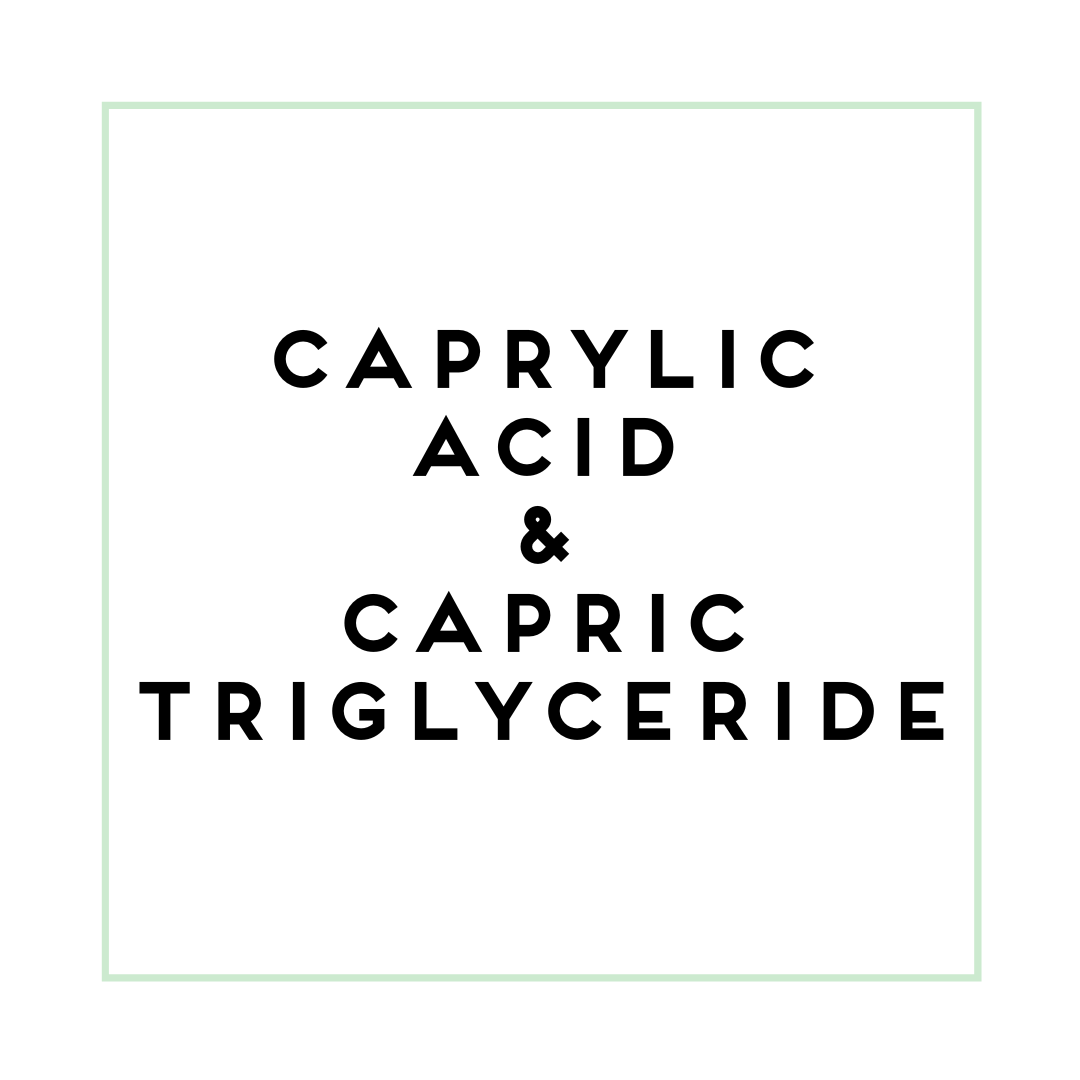What is caprylic/capric triglyceride?
Caprylic acid is a saturated fatty acid, also known as octanoic acid is usually naturally derived from palm kernel or coconut oil. It is a clear, odourless and edible liquid that comes from the coconut of the coconut palm tree.
Where is caprylic/capric trigylceride derived from?
It comes from the coconut of the coconut palm tree found in tropical and subtropical areas around the world.
Valued as a more natural alternative, it binds ingredients well and helps active ingredients last longer in topical skincare products
How is caprylic/capric trigylceride made?
It is made by first separating the fatty acids and the glycerol by hydrolysing (exposing to heat and pressure) the coconut oil.
What will caprylic/capric trigylceride do for my skin?
It is usually used in skin care as an emollient, dispersing agent and solvent. As an emollient, it quickly penetrates the surface to condition the skin and hair, and provides a lightweight, non-greasy lubricating barrier. As a dispersing agent, it helps enhance the delivery of vitamins, pigments and active ingredients contained in a solution so that they become evenly spread and fully absorbed by the epidermis. Its oily texture thickens cosmetic formulas and provides a slipperiness, which in turn allows the easy spreadability of solutions and a smooth after-feel.
Cosmetic formulators value this product for its lack of colour and odour, as well as for its stability. It has such great stability and resistance to oxidation that it has an almost indefinite shelf life.
This emollient, or skin softener, helps to boost the penetration of skincare formulations and makes them spread easily across the skin. It is light-textured, clear, odourless and non-greasy.
What skin types is caprylic/capric triglyceride suitable for?
It is suitable for all skin types but due to it’s anti microbial properties, it can help fight acne.
Sources & disclaimer
-
Winter, Ruth. A Consumer's Dictionary of Cosmetic Ingredients, 7th Edition. Potter/Ten Speed/Harmony/Rodale.
-
Milady Skincare and Cosmetic Ingredients Dictionary 4th Edition; M. Varinia Michalun, Joseph C. Dinardo
-
An Atlas of Natural Beauty: Botanical ingredients for retaining and enhancing beauty L'Officine Universelle Buly
-
Practical Aromatherapy - The Complete Beginner’s Guide to Choosing, Massaging and Relaxing with Essnetial Oils. Penny Rich

